De-icing aircraft at the airport before departure is a winter necessity. But its associated delays and other problems could soon be over.
Modern aircraft get much of their efficiency thanks to carefully designed wing airfoils. But any wing contamination risks degrading the performance of the wings, “robbing” lift and making them unsafe. And what we usually refer to, when talking about wing contamination, is snow and ice.
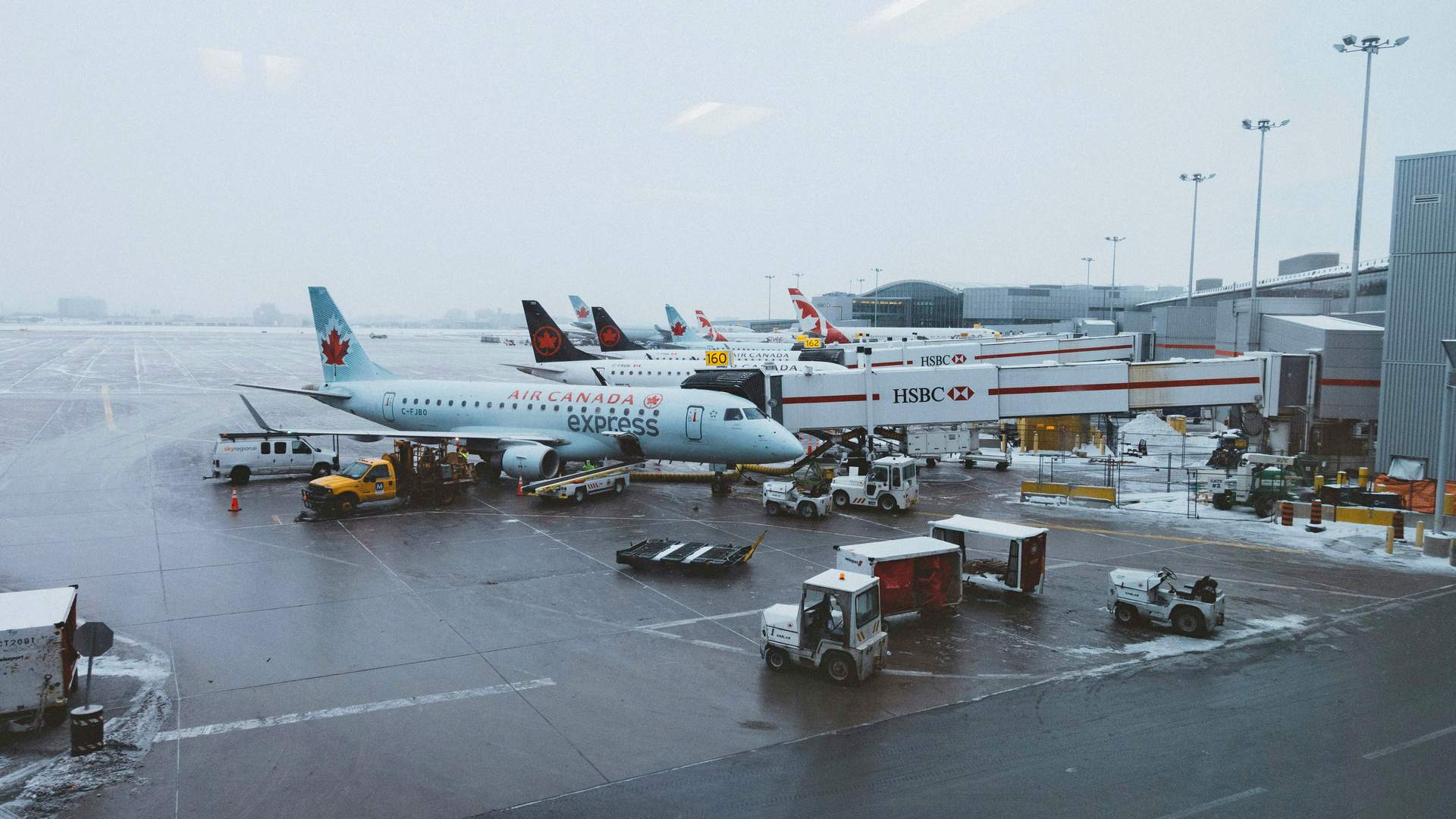
Many tragic accidents have happened after an aircraft got no or inadequate de-icing at the airport. Over the years, standards for de-icing liquids have led to fluids that can handle different weather conditions, with different “hold-over” times.
Ground crews can de-ice aircraft at their gate, or if conditions at the airport are especially bad, there may be de-icing pads near the ends of the runways. But in busy airports, this often means that aircraft have to queue, wasting time and, often, fuel.
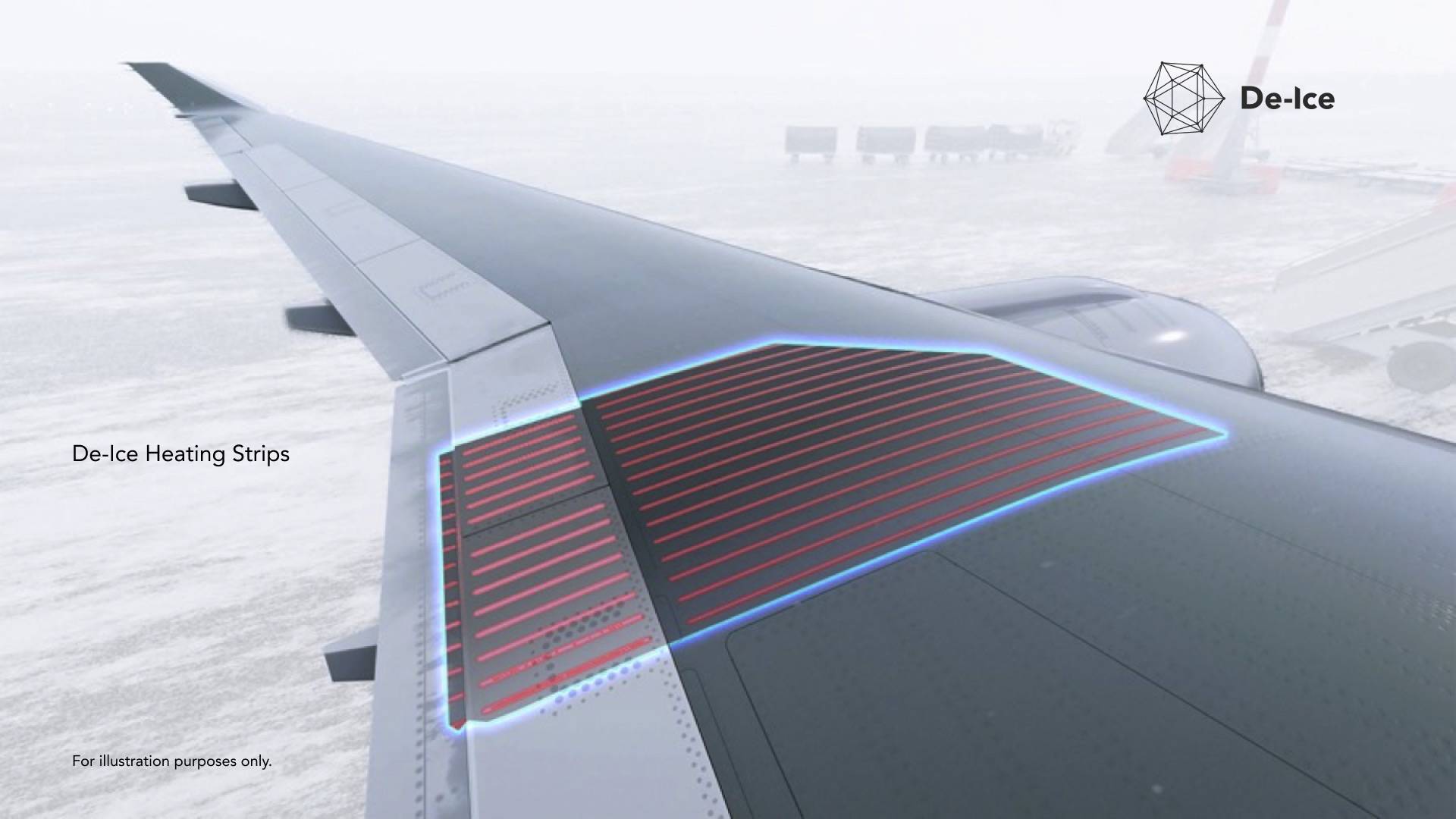
A company called De-Ice believes that it has a solution. We have already seen that there is a trend to electrify a lot of aircraft systems, that previously used engine bleed air or hydraulic pressure. But in this case, De-Ice proposes to introduce a new system, that uses electricity.
When in flight, aircraft use anti-ice systems to keep their engines and wing leading edges clear of contamination. This new system won’t replace that. Rather, De-Ice intends its system to replace the rows of airport de-icing vehicles, along with the glycol-based chemicals that they spray on the wings and other key surfaces.
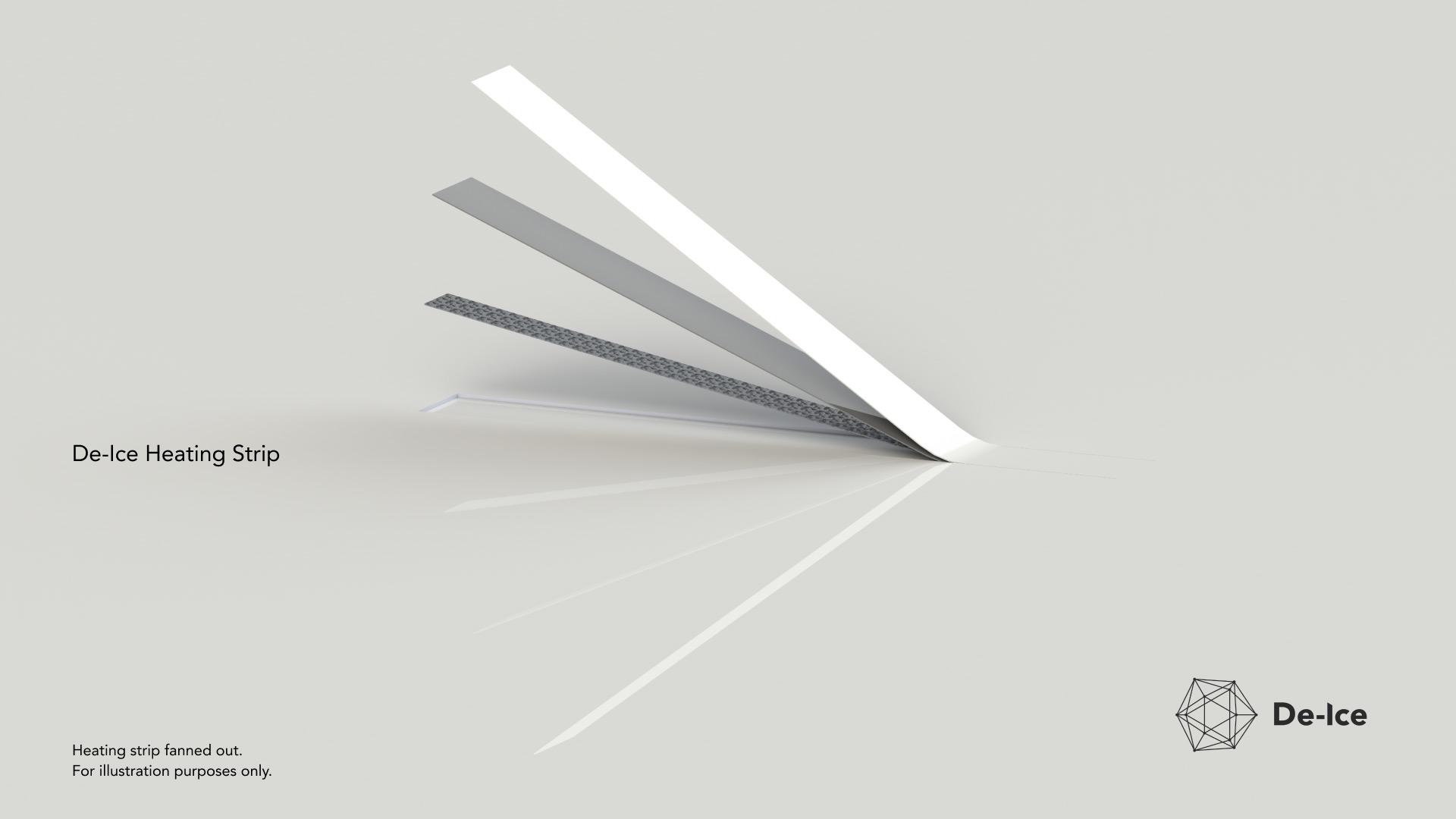
Airport De-Icing Alternative: How it Works
The system relies on tape-like heating strips, that can be attached to the exterior of the wings and other key surfaces. Gallium nitride (GaN) semiconductors (elsewhere in the aircraft) then generate a high-frequency current, heating the strips.
It isn’t clear how much weight this system adds to the aircraft. But these GaN devices are lighter and more efficient than older technologies, making them suitable for aircraft use, according to De-Ice.
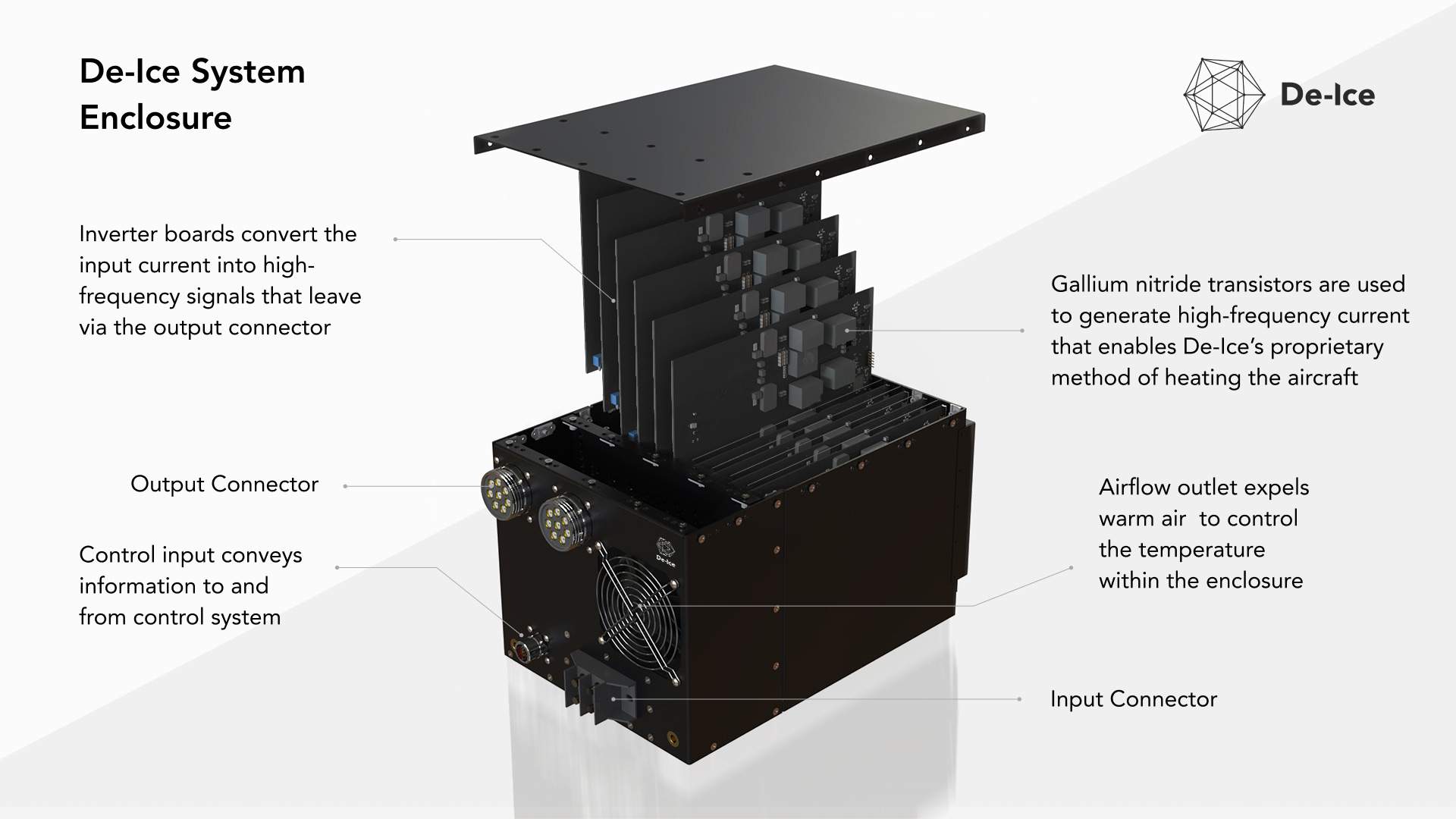
There are many benefits from aircraft crews not having to rely on airport infrastructure for de-icing. Aside from avoiding delays, there are environmental benefits: avoiding the use of large quantities of chemicals, plus skipping the need to create and ship the chemicals to the airports.
Another bonus is that according to De-Ice, it is possible to install the new system during routine aircraft maintenance. Air Canada is the first company to try the system, installing it on an Airbus A320.
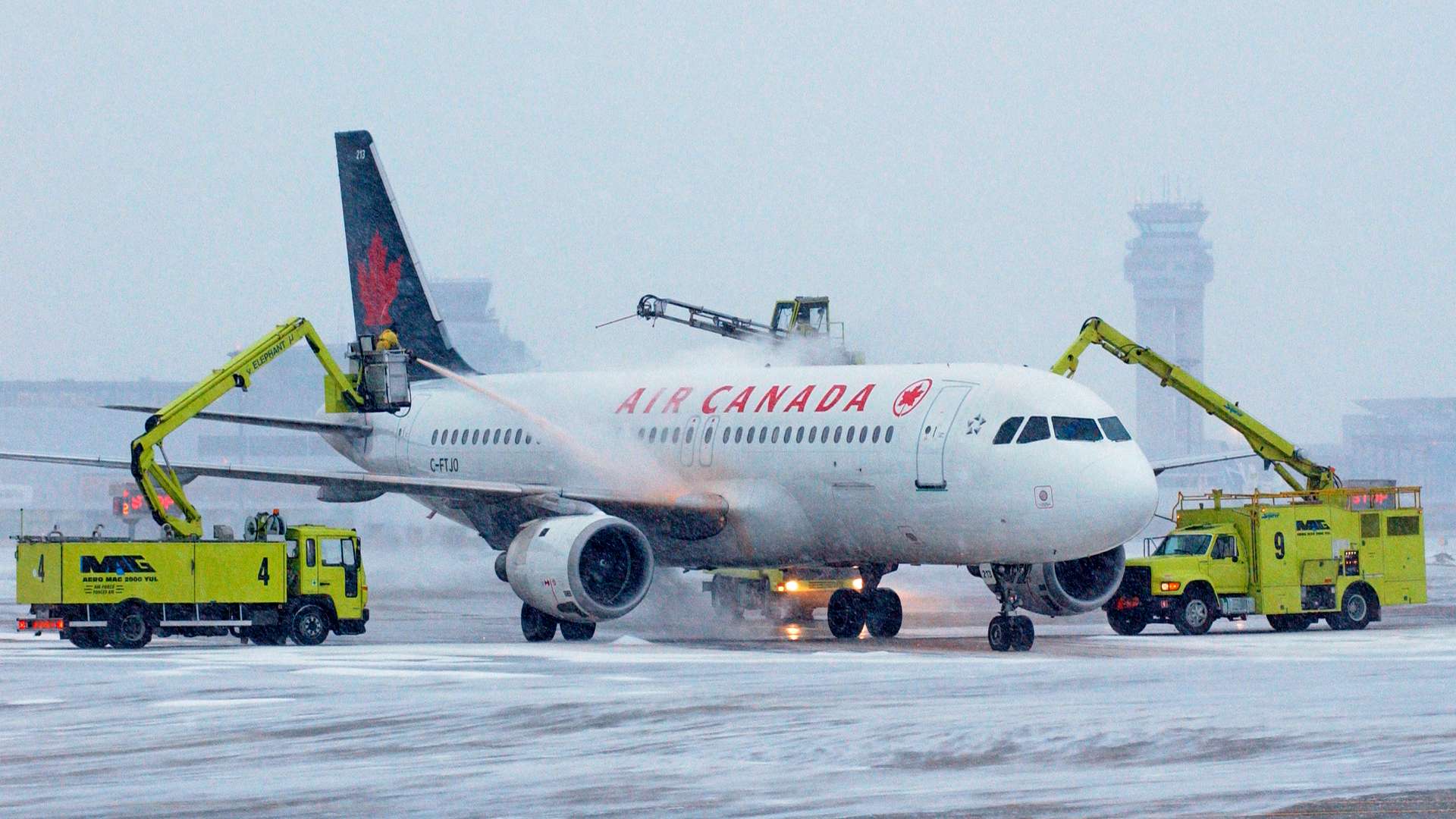
But can this new system actually replace airport de-icing completely? Can it keep up with large accumulations of snow on aircraft parked overnight, for example? And what about snow on the fuselage, in areas near air data sensors, that need to be clear of snow and ice?
Hopefully, the testing will soon reveal the new de-icing system’s benefits and limitations. Perhaps its weight will be a limiting factor for airlines operating in warmer climates. But for many others, the fuel wasted while queueing at airport de-ice pads, or the cancellations of flights due to de-icing delays, may well make the new system very attractive.



